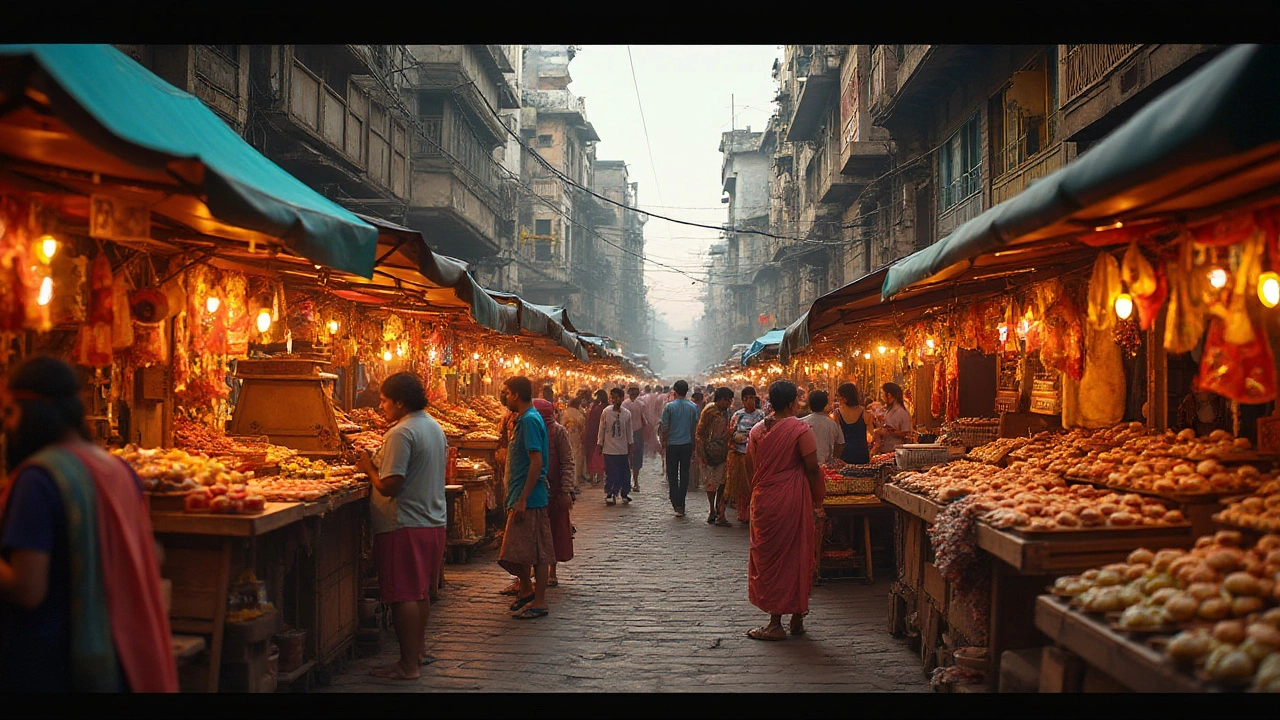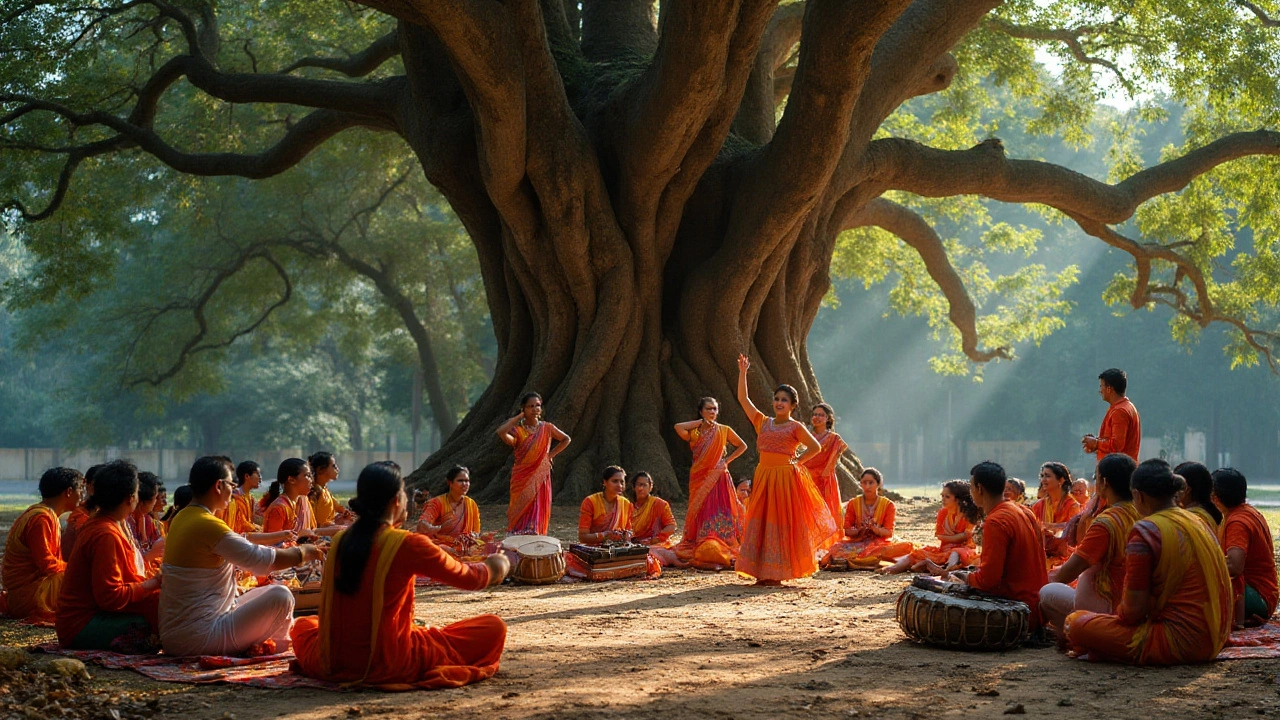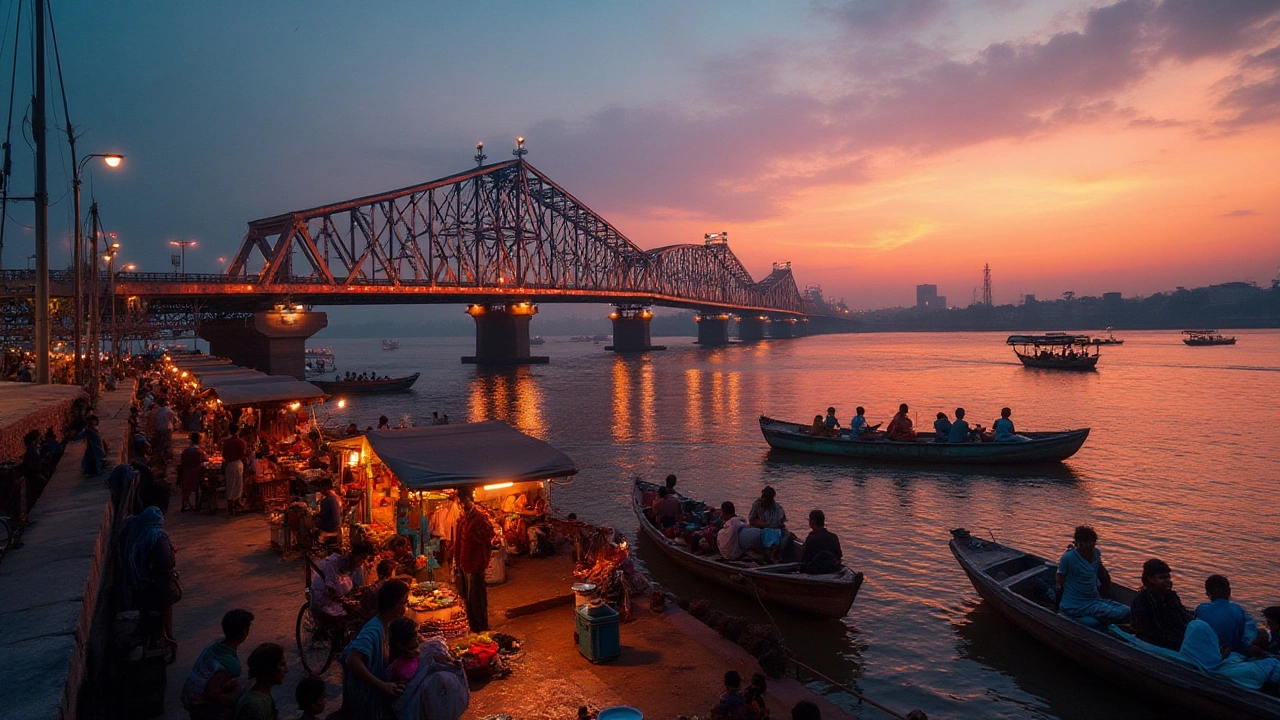Discovering the Cultural Heart of India: The City of Kolkata

The vibrant city of Kolkata, located in eastern India, carries a legacy of rich cultural history that continues to captivate travelers from all over the world. Often hailed as the cultural epicenter of India, the city serves as an appealing blend of tradition, art, and modernity. With its harmonizing chaos of ancient architecture and modern skyscrapers, Kolkata is a visual feast and a mélange of experiences.
This city was once the capital of British India and remains the birthplace of many of the country's most celebrated literary and cultural icons, such as Rabindranath Tagore. Delve into the bustling streets, and you will find art galleries, theaters, and museums teeming with stories of the past and present. Kolkata's cultural landscape is not only confined to its buildings and history but is vibrantly alive in its festivals like Durga Puja, which attracts millions each year.
From its aromatic street food and sweet delicacies like 'Rasgulla' to its dramatic performances and soulful music, Kolkata is synonymous with a cultural journey like no other. For those keen on exploring India's cultural dimensions, Kolkata promises a profound experience that blends sensory delight with intellectual exploration.
- Historical Significance of Kolkata
- Literary and Artistic Influence
- Festivals and Celebrations
- Travel Tips for Cultural Enthusiasts
Historical Significance of Kolkata
Kolkata, affectionately known as the cultural city of India, holds a prominent place in the annals of Indian history. This city, established as the British East India Company's trading post in the late 17th century, rapidly grew into the capital of British India by 1772. This period marked the beginning of a transformation that dramatically redefined its context and character. The British influence is still evident today in the architectural wonders that line the cityscape, the most famous being the Victoria Memorial - a monumental edifice constructed to honor Queen Victoria. This iconic structure, with its stunning blend of British and Mughal elements, stands as a testament to the complex history that shaped modern India.
During the colonial era, Kolkata was a melting pot of Indian and Western cultures, which fostered an environment ripe for intellectual and artistic growth. The city played a pivotal role during the Bengal Renaissance, nurturing a spirit of reform and awakening in art, literature, and social consciousness. Great philosophers and poets such as Rabindranath Tagore - the first non-European to win the Nobel Prize in Literature - emerged from this vibrant milieu. Tagore's legacy continues to be celebrated in Kolkata, with many literary festivals and museums dedicated to his life and work. As the first base for many freedom fighters, the city also became a cradle for movements aiming for India's independence. Figures like Subhas Chandra Bose, with his revolutionary zeal, left indelible marks on the fight for freedom from colonial rule.
In the heart of Kolkata lies the Indian Museum, established in 1814, which is one of the oldest museums in the world and a treasure trove of cultural heritage. With its expansive collection of artifacts, from Egyptian mummies to beautiful Mughal paintings, it offers a deep dive into the rich tapestry of human history and creativity. Kolkata's deep-rooted traditions in classical music, dance, and drama also trace back to centuries, influencing generations of artists and shaping the cultural narrative of India. This historical wealth, combined with the city’s enduring spirit of embracing new ideas, makes Kolkata a pivotal chapter in the historical and cultural evolution of India.
Given its multifaceted history, it's no surprise the city is home to a plethora of historical landmarks. One such landmark, Howrah Bridge, constructed in 1943, is an engineering marvel that serves as a gateway to the city. Built without a single nut and bolt, it not only symbolizes architectural ingenuity but also plays a crucial role in the daily life of Kolkata's residents. The intersection of old-world charm and modern infrastructure creates a unique urban landscape where history is intricately woven into the fabric of everyday life. A stroll through the bustling streets of Kolkata reveals stories in every corner, where each building whispers tales of days gone by, echoing the city’s vast and diverse past.
As Gyan Prakash, a professor of history at Princeton University remarks, "Kolkata’s history is embedded in the stones of its streets, echoing the aspirations and struggles of those who have lived before us."

Literary and Artistic Influence
The city of Kolkata has long been a nurturing ground for literary and artistic expression, earning a reputation as the intellectual and artistic capital of India. Home to a myriad of poets, writers, and artists, its rich literary heritage has been celebrated and revered across generations. One cannot discuss Kolkata's literary greatness without mentioning the Nobel Laureate Rabindranath Tagore, whose works not only shaped Bengali literature but also put Indian culture on the global map. His contributions encapsulate the spirit of creativity that runs through Kolkata's veins.
"The highest education is that which does not merely give us information but makes our life in harmony with all existence." — Rabindranath Tagore
Beyond the pages of literature, Kolkata embodies a thriving arts scene with institutions like the Indian Museum and the annual Kolkata International Film Festival, which showcase both classical and contemporary works. The dramatic arts flourish here as well, with theaters like the Academy of Fine Arts staging plays that address poignant social and political themes. The city's art galleries, such as the Birla Academy of Art and Culture, provide space for both established artists and budding talent, reflecting an ongoing commitment to fostering artistic growth.
Kolkata's Pioneering Artists and Movements
The emergence of the Bengal School of Art, led by Abanindranath Tagore, revolutionized Indian painting in the early 20th century, ushering in a nationalist movement in art that blended traditional Indian styles with Western techniques. This movement challenged the prevailing academic style and inspired a generation of artists, bringing Indian aesthetics to the forefront. Another seminal figure, filmmaker Satyajit Ray, hailed from Kolkata and gained international acclaim with his path-breaking films like 'Pather Panchali'. His works continue to influence filmmakers today, both in India and globally.
Kolkata is also known for its vibrant book fairs and literary festivals, the Kolkata Book Fair being the world's largest non-trade book fair, drawing authors, publishers, and readers from all over the world. These events are not just about literature; they are cultural extravaganzas that celebrate the spoken and written word with discussions, plays, storytelling sessions, and book signings. Such vibrant engagement with literature and the arts illustrates the city's enduring passion and innovation and its pivotal role as a cultural beacon in India.
The people of Kolkata have an enduring love affair with the arts. This is evident in the city's bustling College Street, home to countless bookstores and the iconic Coffee House, a hub for intellectuals, students, and creative minds alike. In a city where every street corner seems to whisper a story and every building has a tale etched in its walls, the vibrant literary and artistic influences define Kolkata not just as a destination, but as a living, breathing masterpiece of cultural achievement.

Festivals and Celebrations
Kolkata is renowned for its exuberant festivals which showcase the city's deep-rooted cultural diversity and rich heritage. Among the myriad celebrations, Durga Puja stands as the heart and soul of the city, an event that enthralls millions and transforms the streets into a theatrical display of devotion and artistry. This festival, which honors the Hindu goddess Durga, is a spectacle of colossal pandals, intricate idols, and vibrant parades. Weeks of meticulous planning and craftsmanship culminate in a celebration that reverberates with dance, music, and rituals. It's during Durga Puja that Kolkata is at its liveliest, with every nook and cranny adorned with lights and societal bounds transcended as every citizen partakes in the joy.
The Kolkata International Film Festival adds a cinematic flair to the city's cultural calendar. As one of the most prominent film events in Asia, it draws filmmakers and cinephiles from across the globe. This festival celebrates the artistic language of cinema, introducing narrative innovations and diverse cultural perspectives. The love for dramatic storytelling extends into the city's daily life, evident in the numerous theater festivals and cultural performances that residents and visitors alike enjoy throughout the year.
While Durga Puja might be the most grandiose, celebrations like Poush Mela and Rabindra Jayanti highlight indispensable elements of Bengali culture. Poush Mela, celebrated in Shantiniketan, is a fair that pays homage to Bengali folk music and crafts, fostering a sense of community through shared musical heritage and artisanal displays. In a quote from famous Bengali writer Sunil Gangopadhyay, captured in the streets of Kolkata during Rabindra Jayanti:
"Every note, each word here is an echo of Tagore's legacy, breathing life into our cultural souls."Rabindra Jayanti commemorates the birth anniversary of the literary giant Rabindranath Tagore, encapsulating the city's passion for its poetic and artistic traditions through songs, dance, and public readings.
If you're a cultural enthusiast planning a trip, timing your visit to coincide with these festivals can offer a richer experience, immersing you in the pulsating core of Kolkata's celebrated spirit. From religious parades to artistic exhibitions, these festivals are not just events; they represent the heartbeat of a community deeply connected to its past and looking joyfully towards its future. Travelers should note that Kolkata's vibrant festival season also means an influx of visitors, so planning accommodations and itineraries well in advance is highly recommended. Some may even argue that to witness Kolkata during its festivals is to experience the true depth of Indian culture in all its colorful grandeur.

Travel Tips for Cultural Enthusiasts
Embarking on a journey to Kolkata, widely recognized as the Cultural City of India, offers a wealth of experiences for cultural enthusiasts. One of the first tips to enhance your trip is to plan your visit around key festivals. The grand celebration of Durga Puja transforms the city into a mythical realm with intricate pandals, mesmerizing light displays, and a sea of humanity in joyous revelry. Experiencing this festival is unlike anything else, as the city literally pulsates with energy and devotion, giving you a unique insight into the cultural fabric of Kolkata. Timing your trip to coincide with such festivities can offer an unparalleled cultural immersion.
Local markets are treasure troves for those interested in the arts and crafts that Kolkata is known for. New Market and Gariahat are bustling hubs where you can find traditional Bengali sarees, artwork, handcrafted jewelry, and more. Here, you can witness firsthand the craftsmanship and skills that have been honed over generations. Wandering through these marketplaces provides not just a shopping experience but also an understanding of local life and the city's economic pulse. Bringing home a piece of Kolkata culture, from a hand-painted item or a traditional garment, is a wonderful way to remember your visit.
For literature aficionados, Kolkata, the birthplace of Rabindranath Tagore, offers a rich landscape of historical and cultural significance. The Indian Museum, Victoria Memorial, and the Jorasanko Thakur Bari, where Tagore was born, are must-visit sites. These locations not only house artifacts and exhibits of considerable historical value but are also architectural marvels. Engaging with local guides at these sites can deepen your understanding as they share anecdotes and legends that you won't find in guidebooks. It is intriguing to note how Indian culture is preserved and celebrated in these spaces.
"Travel makes one modest. You see what a tiny place you occupy in the world." — Gustave Flaubert
When it comes to savoring the cuisine, do not miss the street foods which are integral to the city's food culture. Delicacies such as 'Puchka' and 'Kathi Rolls' provide a gustatory adventure through spicy, tangy, and savory profiles. A meal in Kolkata is incomplete without trying the renowned sweet, 'Rasgulla', whose origins are hotly contested with Odisha. While these treats delight your taste buds, they also tell stories about the region, ingredients, and shared traditions between communities.
Even as you plan your itinerary, remember to incorporate some leisure to simply walk through the city's iconic neighborhoods. From the colonial architecture of Park Street and Howrah Bridge to the artistic vibes of College Street, acknowledging the cultural tourism experience goes beyond just visiting sites. A leisurely exploration often leads to unexpected discoveries—be it a hidden café steeped in history, a local musician strumming tunes, or a moment of serene beauty by the Hooghly River. These experiences encapsulate the spirit of Kolkata and offer a real feel of its vibrant life.
Finally, for travelers focusing on sustainable tourism, consider engaging with initiatives that support local artisans and cultural preservation. Many tours in Kolkata have integrated sustainable practices, allowing you to appreciate an authentic experience while supporting community-led efforts. This not only enriches your visit but ensures that the cultural character and heritage of this magnificent city are preserved for generations to come.